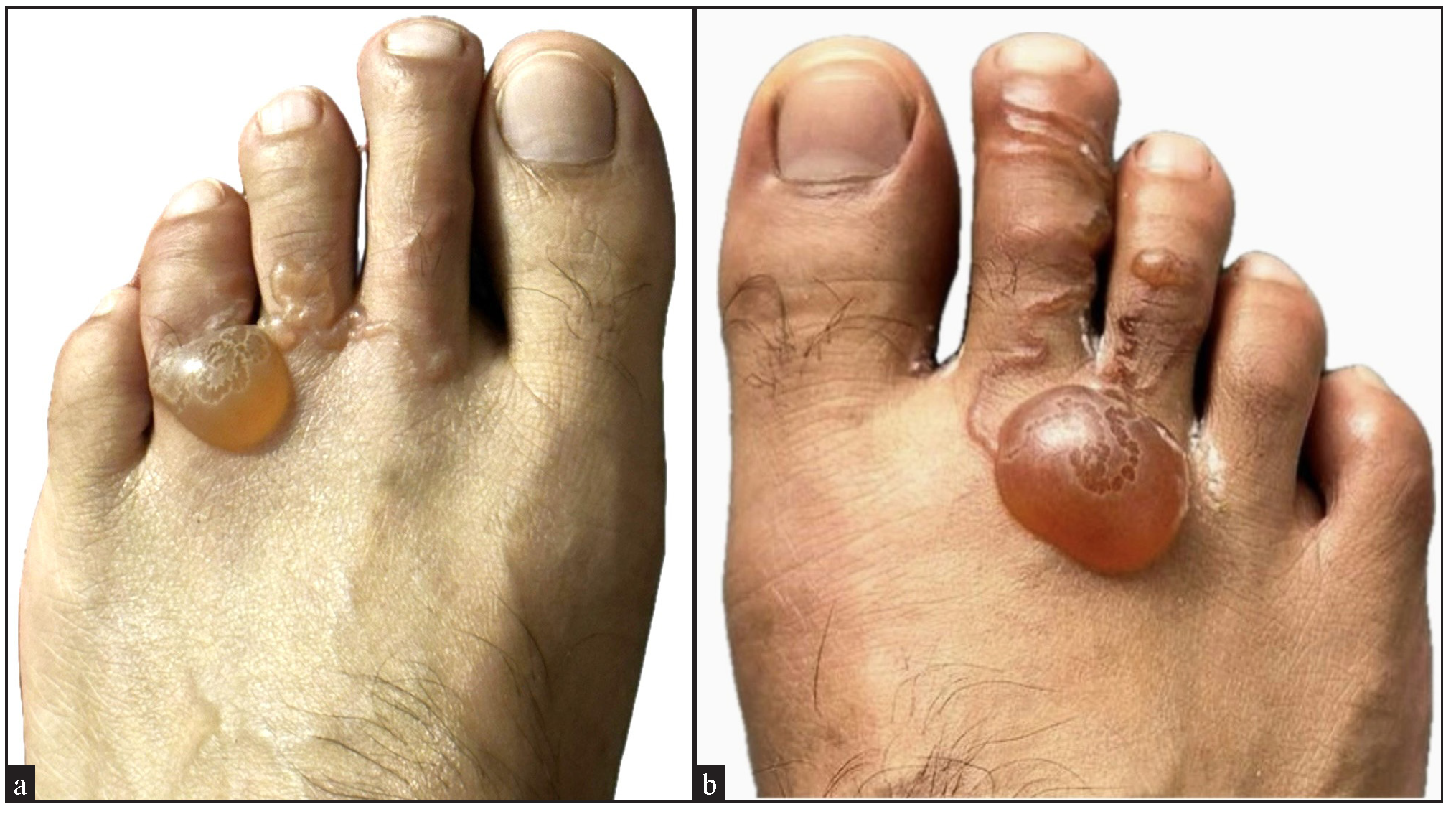Translate this page into:
Bullous cutaneous larva migrans
Corresponding author: Dr. Yashika Jayesh Doshi, Department of Dermatology, Venereology and Leprosy, B. J. Medical College and Civil Hospital, Ahmedabad, Gujarat, India. yashikajdoshi@gmail.com
-
Received: ,
Accepted: ,
How to cite this article: Doshi YJ. Bullous cutaneous larva migrans. Indian J Dermatol Venereol Leprol. doi: 10.25259/IJDVL_373_2025
A 34-year-old man developed a blister with itching and migrating serpiginous tracts on both feet [Figure 1a, 1b] over 7 days after playing volleyball barefoot on a beach in California. He was diagnosed with bullous cutaneous larva migrans and treated with albendazole (400 mg daily for 3 days), ivermectin (12 mg stat) and prednisolone (10 mg once daily for 3 days and tapered to 5 mg for the next 3 days). His cutaneous larva migrans was resolved within a week. Cutaneous larva migrans, caused by animal hookworm larvae, can occasionally present with vesicles and bullae. The exact mechanism of bulla formation is unclear but may involve hypersensitivity or larval lytic enzymes. Due to rising helminthic resistance, dual therapy with albendazole and ivermectin is becoming increasingly necessary.

- Erythematous, serpiginous tracts with tense bullae suggestive of bullous cutaneous larva migrans over both feet.
Declaration of patient consent
The authors certify that they have obtained all appropriate patient consent.
Financial support and sponsorship
Nil.
Conflicts of interest
There are no conflicts of interest.
Use of artificial intelligence (AI)-assisted technology for manuscript preparation
The author confirms that there was no use of artificial intelligence (AI)-assisted technology for assisting in the writing or editing of the manuscript and no images were manipulated using AI.





